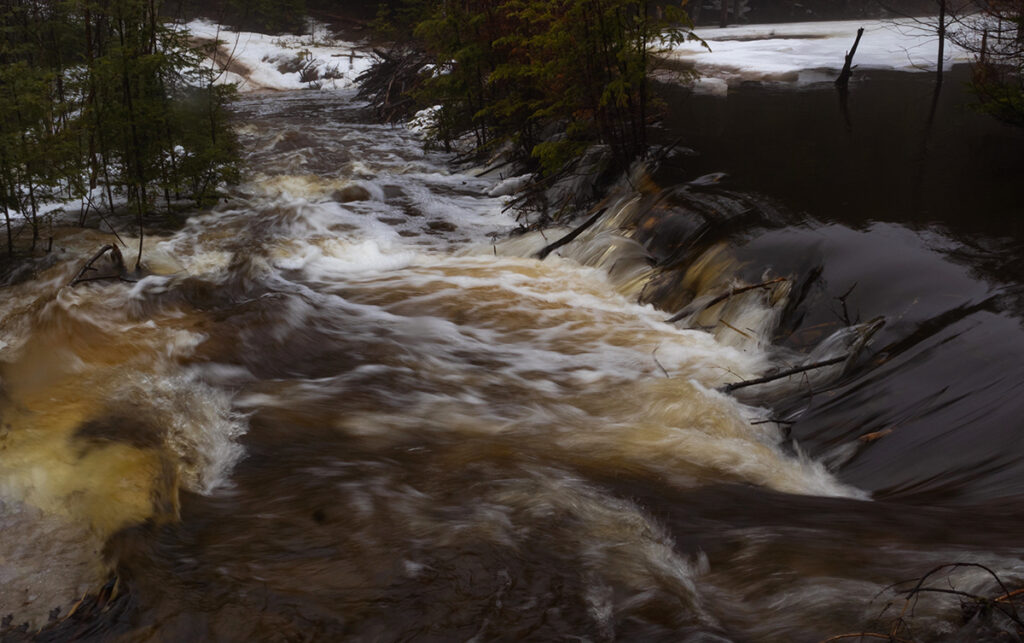Canadian winters are long and frigid. When relief finally rolls around in the form of early warm weather we’re overjoyed. But, we might want to think twice before celebrating. Canada’s false springs could signal trouble for the ecosystem and may increase the spread of disease from ticks and mosquitoes.

What is false spring?
Scientists define a false spring as “a period of weather in late winter or early spring sufficiently mild and long to bring vegetation out of dormancy prematurely.”1
Climate Change brings earlier springs
False springs are more common today than in the past because of climate change. Spring is coming earlier, but temperature variability is staying the same or increasing.2 When warm temperatures are followed by a hard freeze, plants can be damaged.3
Many studies on the impacts of false springs have focused on the United States and Europe. While it is possible to hypothesize what may be happening here based on that information, more studies are needed to understand the specific ecological impacts of Canada’s false springs.
The problem for plants and animals
The study of biological life cycles and how they are impacted by the changing seasons is known as phenology. When scientists speak about false springs, the focus is often on the “phenological mismatches between the availability of plant resources and dependent animals” after “freezing temperatures damage new plant growth.”5
In Canada, many native plants are cold resistant. But, “sub-freezing temperatures after spring onset can damage vulnerable plant tissue” causing death or lower productivity.6 Some plants are more resilient than others, “but a daily minimum temperature below -2.2°C is likely to cause damage, and is considered a hard freeze.”7
When hard freezes damage plants, it can causes a ripple effect through the food web. This is because flowers, fruits, and seeds are important foods for many wildlife.8 For instance, false spring can deprive “hibernating animals of a crucial early food source.”9 It may also make animals more vulnerable to predation. Take for example, the snowshoe hare who changes its colour with the seasons. An early spring means the hare’s bright white coat stands out in the absence of snow.10
Mosquitoes, ticks, disease, and crop damage
False springs also have short-term and long-term implications for humans. Early springs and warmer weather will bring about more tick-borne diseases11 and the migration of disease-spreading mosquitoes further North.12
False springs also have the potential to destroy important agricultural crops resulting in economic loss and shortages. For instance, fruit tree growers could see a year’s worth of crops destroyed if fruit trees receive frost after they’ve flowered.13 Maple syrup producers also see early ends to sap flows with the onset of a false spring.14
In summary
Canada’s false springs might provide short-term relief from frigid temperatures, but it’s clear that they pose dangers for us and the plants and animals we love.
Other posts you may enjoy
Vernal Pools: Seasonal Wetlands and Their Importance
Acadian Forest: History, Species, and Biodiversity
Common Spring Plants and Their Uses
Sources
1 T. Ault, G. Henebry, K. de Beurs, M. Schwartz, J. Betancourt, and D. Moore. 2013. “The False Spring of 2012, Earliest in North American Record.”
2 S. Via. 2017. “False spring: Just the same old variable weather or new territory?“
3 T. Ault. et. al. 2013.
4 A. Allstadt, S. Vavrus, P. Heglund, A. Pidgeon, W. Thogmartin, and V. Radeloff. 2015. “Spring plant phenology and false springs in the conterminous US during the 21st century.”
5 Ibid.
6 Ibid.
7 Ibid.
8 S. Martinuzzi, A. Allstaft, A. Pidgeon, C. Flather, W. Jolly, and C. Radeloff. 2019. “Future changes in fire weather, spring droughts, and false springs across US National Forests and Grasslands.”
9 R. Meyer. 2017. “What’s Dangerous About an Early Spring.” The Atlantic.
10 Ibid.
11 C. Bouchard, A. Dibernardo, J. Koffi, H. Wood, P. Leighton, L. Lindsay. 2019. “Increased risk of tick-borne diseases with climate change.”
12 2019. “Climate Change Will Expose Half of World’s Population to Disease-Spreading Mosquitoes By 2050.”
13 R. Stevenson. 2021. “False spring can do more harm than good.”
14 Ibid.